
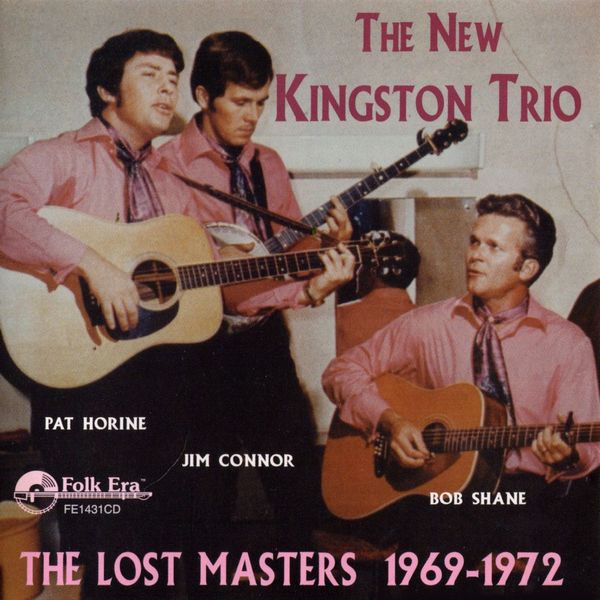 |
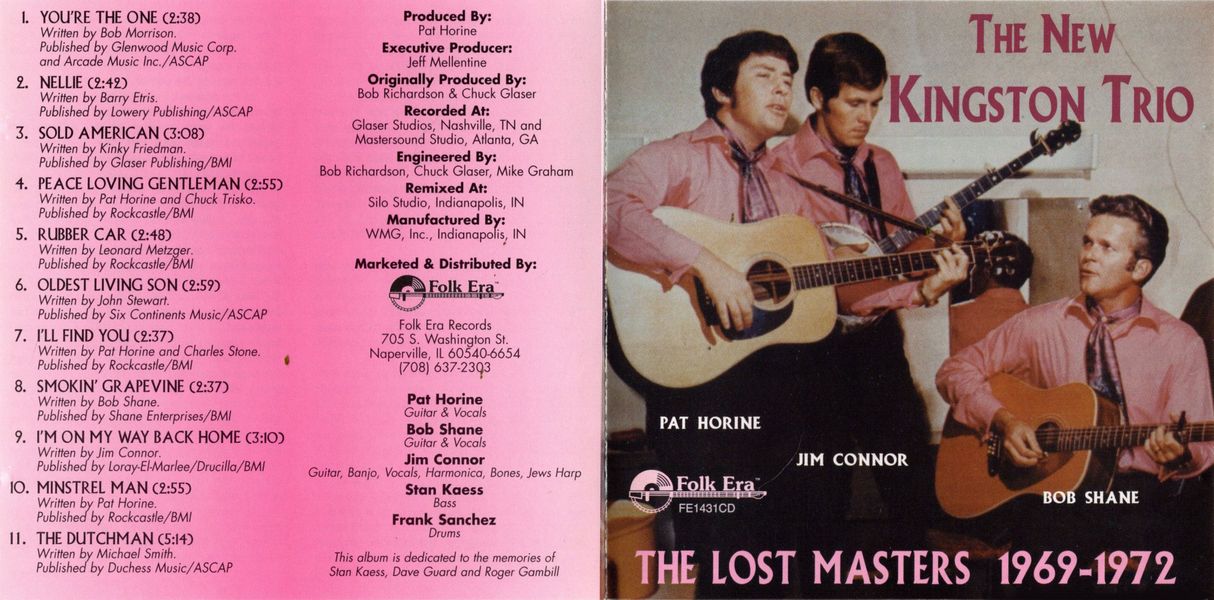
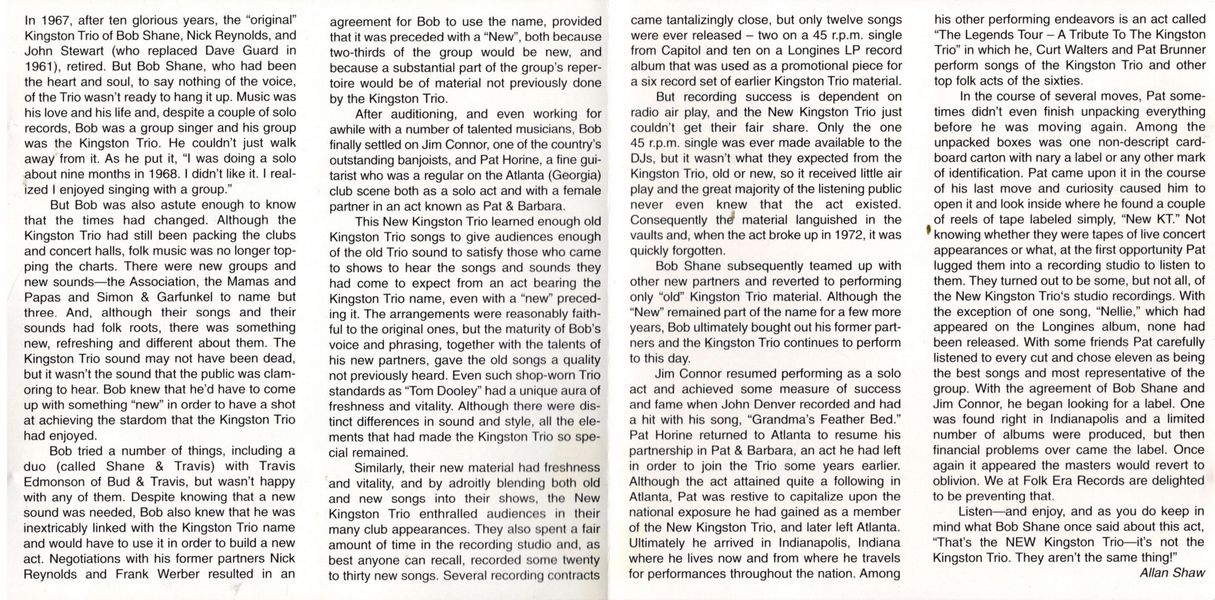 |
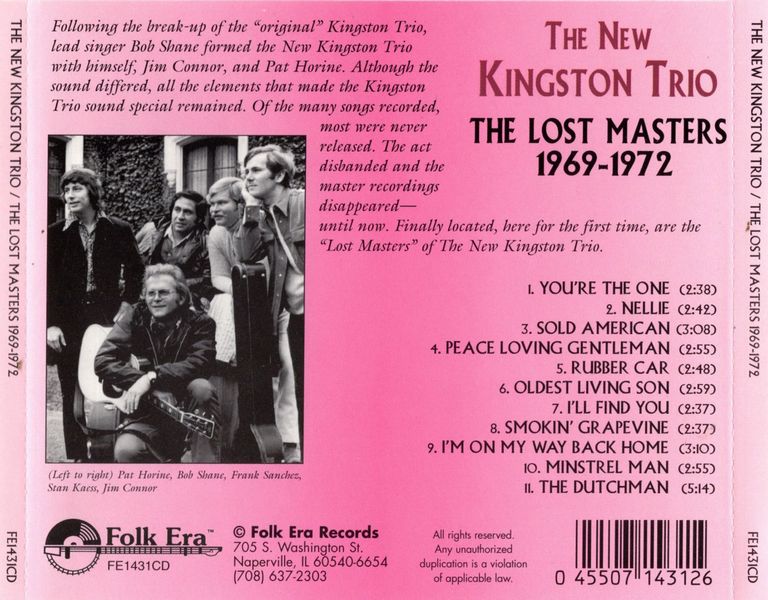
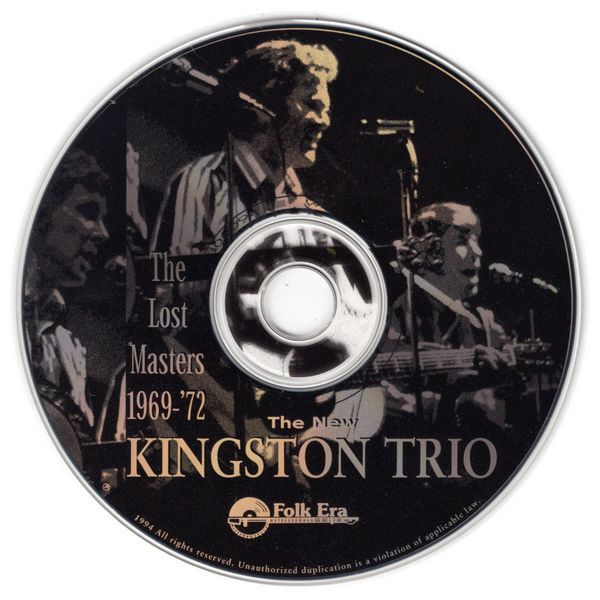
|
Sleeve Notes
Following the break-up of the "original" Kingston Trio, lead singer Bob Shane formed the New Kingston Trio with himself Jim Connor, and Pat Horine. Although the sound differed, all the elements that made the Kingston Trio sound special remained. Of the many songs recorded, most were never released. The act disbanded and the master recordings disappeared — until now. Finally located, here for the first time, are the "Lost Masters" of 'The New Kingston Trio.
In 1967, after ten glorious years, the "original" Kingston Trio of Bob Shane, Nick Reynolds, and John Stewart (who replaced Dave Guard in 1961), retired. But Bob Shane, who had been the heart and soul, to say nothing of the voice, of the Trio wasn’t ready to hang it up. Music was his love and his life and, despite a couple of solo records, Bob was a group singer and his group was the Kingston Trio. He couldn’t just walk away from it. As he put it, "I was doing a solo about nine months in 1968. I didn't like it. I realized I enjoyed singing with a group."
But Bob was also astute enough to know that the times had changed. Although the Kingston Trio had still been packing the clubs and concert halls, folk music was no longer topping the charts. There were new groups and new sounds — the Association, the Mamas and Papas and Simon & Garfunkel to name but three. And, although their songs and their sounds had folk roots, there was something new, refreshing and different about them. The Kingston Trio sound may not have been dead, but it wasn’t the sound that the public was clamoring to hear. Bob knew that he’d have to come up with something "new" in order to have a shot at achieving the stardom that the Kingston Trio had enjoyed.
Bob tried a number of things, including a duo (called Shane & Travis) with Travis Edmonson of Bud & Travis, but wasn’t happy with any of them. Despite knowing that a new sound was needed, Bob also knew that he was inextricably linked with the Kingston Trio name and would have to use it in order to build a new act. Negotiations with his former partners Nick Reynolds and Frank Werber resulted in an agreement for Bob to use the name, provided that it was preceded with a "New", both because two-thirds of the group would be new, and because a substantial part of the group’s repertoire would be of material not previously done by the Kingston Trio.
After auditioning, and even working for awhile with a number of talented musicians, Bob finally settled on Jim Connor, one of the country’s outstanding banjoists, and Pat Horine, a fine guitarist who was a regular on the Atlanta (Georgia) club scene both as a solo act and with a female partner in an act known as Pat & Barbara.
This New Kingston Trio learned enough old Kingston Trio songs to give audiences enough of the old Trio sound to satisfy those who came to shows to hear the songs and sounds they had come to expect from an act bearing the Kingston Trio name, even with a "new" preceding it. The arrangements were reasonably faithful to the original ones, but the maturity of Bob's voice and phrasing, together with the talents of his new partners, gave the old songs a quality not previously heard. Even such shop-worn Trio standards as "Tom Dooley" had a unique aura of freshness and vitality. Although there were distinct differences in sound and style, all the elements that had made the Kingston Trio so special remained.
Similarly, their new material had freshness and vitality, and by adroitly blending both old and new songs into their shows, the New Kingston Trio enthralled audiences in their many club appearances. They also spent a fair amount of time in the recording studio and, as best anyone can recall, recorded some twenty to thirty new songs. Several recording contracts came tantalizingly close, but only twelve songs were ever released — two on a 45 r.p.m. single from Capitol and ten on a Longines LP record album that was used as a promotional piece for a six record set of earlier Kingston Trio material.
But recording success is dependent on radio air play, and the New Kingston Trio just couldn't get their fair share. Only the one 45 r.p.m. single was ever made available to the DJs, but it wasn’t what they expected from the Kingston Trio, old or new, so it received little air play and the great majority of the listening public never even knew that the act existed. Consequently the material languished in the vaults and, when the act broke up in 1972, it was quickly forgotten.
Bob Shane subsequently teamed up with other new partners and reverted to performing only "old" Kingston Trio material. Although the "New" remained part of the name for a few more years, Bob ultimately bought out his former partners and the Kingston Trio continues to perform to this day.
Jim Connor resumed performing as a solo act and achieved some measure of success and fame when John Denver recorded and had a hit with his song, "Grandma’s Feather Bed." Pat Horine returned to Atlanta to resume his partnership in Pat & Barbara, an act he had left in order to join the Trio some years earlier. Although the act attained quite a following in Atlanta, Pat was restive to capitalize upon the national exposure he had gained as a member of the New Kingston Trio, and later left Atlanta. Ultimately he arrived in Indianapolis, Indiana where he lives now and from where he travels for performances throughout the nation. Among his other performing endeavors is an act called "The Legends Tour — A Tribute To The Kingston Trio" in which he, Curt Walters and Pat Brunner perform songs of the Kingston Trio and other top folk acts of the sixties.
In the course of several moves, Pat sometimes didn't even finish unpacking everything before he was moving again. Among the unpacked boxes was one non-descript cardboard carton with nary a label or any other mark of identification. Pat came upon it in the course of his last move and curiosity caused him to open it and look inside where he found a couple of reels of tape labeled simply, "New KT." Not knowing whether they were tapes of live concert appearances or what, at the first opportunity Pat lugged them into a recording studio to listen to them. They turned out to be some, but not all, of the New Kingston Trio's studio recordings. With the exception of one song, "Nellie," which had appeared on the Longines album, none had been released. With some friends Pat carefully listened to every cut and chose eleven as being the best songs and most representative of the group. With the agreement of Bob Shane and Jim Connor, he began looking for a label. One was found right in Indianapolis and a limited number of albums were produced, but then financial problems over came the label. Once again it appeared the masters would revert to oblivion. We at Folk Era Records are delighted to be preventing that.
Listen — and enjoy, and as you do keep in mind what Bob Shane once said about this act, "That’s the NEW Kingston Trio — it’s not the Kingston Trio. They aren't the same thing!"
Allan Shaw